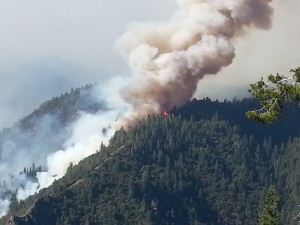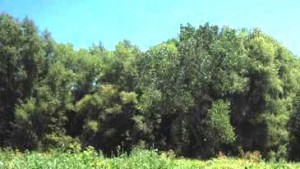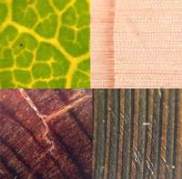Since 2004, the SNAMP Science and Public Participation teams have been working to understand how forest vegetation treatments to prevent wildfire affect fire risk, wildlife, forest health, and water, all while developing a new model for engaging the public on land management issues. Their work was profiled in the spring issue of our College of Natural Resources magazine: “Today, as SNAMP reaches the end of a 10-year run, the project has proven to be a multidisciplinary, multiagency, multimedia success that has the potential to transform not only how we view forest fires, but more intriguingly, how scientists, government agencies, and public stakeholders interact in the pursuit of common goals. …SNAMP’s goals went far beyond simply figuring out the best way to slow a wildfire’s spread. The experiment proceeded along parallel tracks, studying fire, forest health, fishers, owls, water quality issues, and spatial data. And crucially, public participation wasn’t an afterthought or an also-ran, but the key piece of the puzzle.


 As ecologists, we know that there is a never-ending supply of things to learn about the forest. So in recent outreach and education activities, PhD student
As ecologists, we know that there is a never-ending supply of things to learn about the forest. So in recent outreach and education activities, PhD student 
 This fall our lab group is happy to welcome visiting student researchers Andie Irons and Briana Becerra.
This fall our lab group is happy to welcome visiting student researchers Andie Irons and Briana Becerra. Congratulations to Stella Cousins who continues to shine as a scientist and communicator. She received an inaugural award in the Graduate Training in Cooperative Extension Program to support her work to bring the forest into the classroom. She also successfully competed for a grant from the Renewable Resources Extension Act to expand her smartphone microscope project. Stella’s work with Cooperative Extension and the Forestry Institute for Teachers was recently featured in ESPM’s departmental blog. Check out
Congratulations to Stella Cousins who continues to shine as a scientist and communicator. She received an inaugural award in the Graduate Training in Cooperative Extension Program to support her work to bring the forest into the classroom. She also successfully competed for a grant from the Renewable Resources Extension Act to expand her smartphone microscope project. Stella’s work with Cooperative Extension and the Forestry Institute for Teachers was recently featured in ESPM’s departmental blog. Check out  Publications abound in the Battles lab this fall! Here are some recent research papers from graduate students:
Publications abound in the Battles lab this fall! Here are some recent research papers from graduate students: At the annual symposium of the California Invasive Plant Council in Chico, Joan Dudney presented her research on the lagged effects of rainfall on rangeland plant community composition. Results suggest that native plants may fare better in grazed grasslands under increasing drought conditions, but forage production is apt to suffer. Joan also earned an award for her talk – congrats to Joan!
At the annual symposium of the California Invasive Plant Council in Chico, Joan Dudney presented her research on the lagged effects of rainfall on rangeland plant community composition. Results suggest that native plants may fare better in grazed grasslands under increasing drought conditions, but forage production is apt to suffer. Joan also earned an award for her talk – congrats to Joan!
